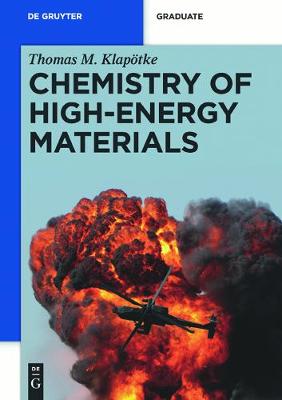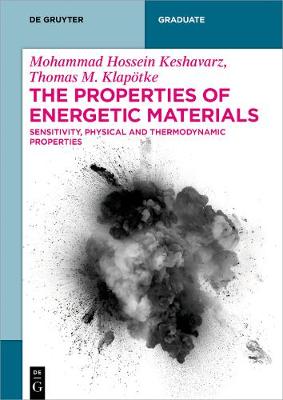De Gruyter Textbook
2 total works
This graduate-level textbook treats the basic chemistry of high energy materials - primary and secondary explosives, propellants, rocket fuel and pyrotechnics - and provides a review of new research developments. Applications in both military and civil fields are discussed. The book also offers new insights into "green" chemistry requirements and strategies for military applications. This work should be of interest to advanced students in chemistry, materials science and engineering, as well as all those working in defense technology.
The Properties of Energetic Materials
by Mohammad Hossein Keshavarz and Thomas M. Klapotke
Published 20 November 2017
For a chemist who is concerned with the synthesis of new energetic compounds, it is essential to be able to assess physical and thermodynamic properties, as well as the sensitivity, of possible new energetic compounds before synthesis is attempted. Various approaches have been developed to predict important aspects of the physical and thermodynamic properties of energetic materials including (but not limited to): crystal density, heat of formation, melting point, enthalpy of fusion and enthalpy of sublimation of an organic energetic compound. Since an organic energetic material consists of metastable molecules capable of undergoing very rapid and highly exothermic reactions, many methods have been developed to estimate the sensitivity of an energetic compound with respect to detonationcausing external stimuli such as heat, friction, impact, shock and electrostatic discharge. This book introduces these methods and demonstrates those methods which can be easily applied.

